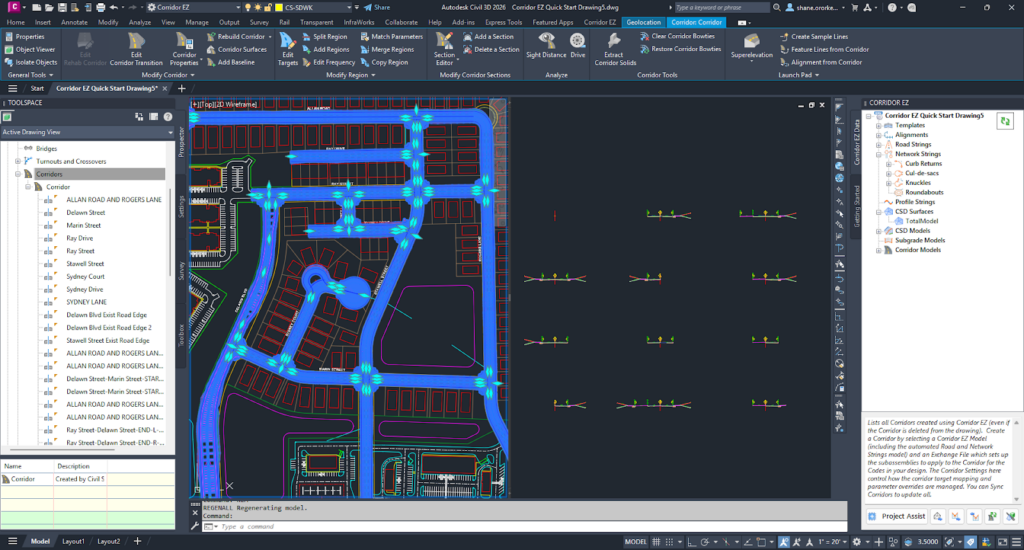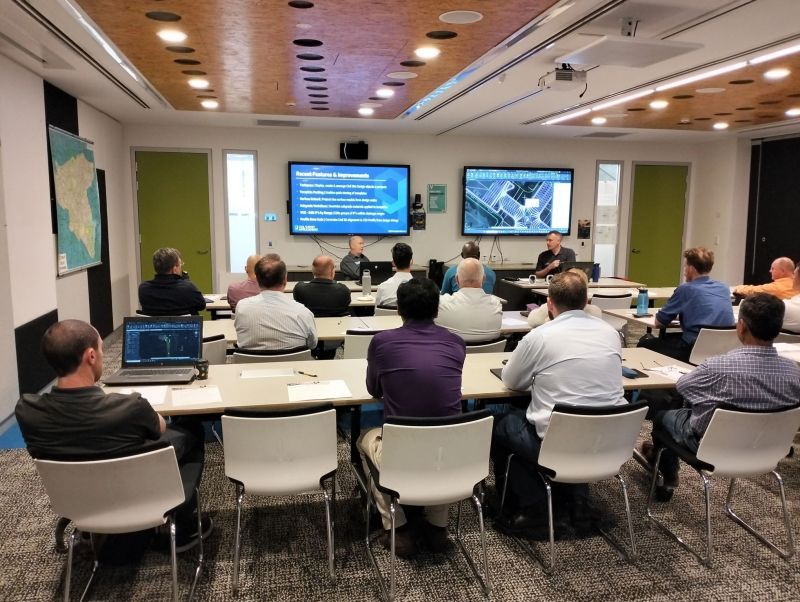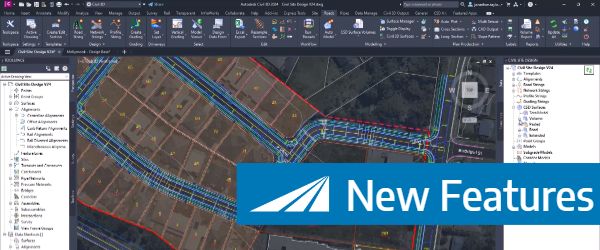Our streamlined design process shaves hours and days off your Civil 3D projects, including the creation of a Civil 3D Corridor complete with multiple regions, target mapping, and assemblies, at the click of a button.
We always aimed to make the corridor like you would, reusing and consolidating similar assemblies wherever possible.
So, for the V26 release we focused on two aspects of the Corrodor EZ Corridor Exchange process:
- Make it faster
- Consolidate the assemblies

Make it faster
When we make the corridor we are creating all the assemblies you need, gathering up all the target mapping and setting up the parameter overrides, so your design is exactly what you expect.
We’ve worked hard to optimize this and it’s now 50% faster than it used to be to get everything together and push it into the corridor build process.
Consolidate the Assemblies
We have consolidated the assemblies created, so that the number of assemblies we create mimics the number of assemblies you would (give or take a few).
In a straightforward corridor containing multiple roads of similar shape, curb returns, cul-de-sacs and knuckles, expect to see between 7 and 13 assemblies. This makes it easy for you to carry on with your corridor design after using Corridor EZ and navigate through the various regions and baselines.
This compares with over 100 for the same model created in earlier versions of Corridor EZ.
Civil Survey Applications recently hosted the ‘Civil Site Design: Council User Training Day’ in Parramatta, NSW. This complimentary technical training workshop was centred on civil engineering and design for local government users, with a focus on practical application of Civil Site Design features. The agenda was designed to deliver direct value to the attendees through […]
Since releasing Civil Site Design in the USA in 2007, we have experienced constant growth. A technical distributor, Logis LLC, was appointed in 2015, followed by the establishment of Civil Survey Applications LLC in 2019. Located in Florida, the team of 5 including three civil engineers, is committed to customising the software for the US […]
Check out the performance improvements we have introduced for all Civil 3D Corridor creators out there!
Check out the performance improvements we've introduced into Civil Site Design V24.20 when you're working in the Vertical Grading Editor window.




